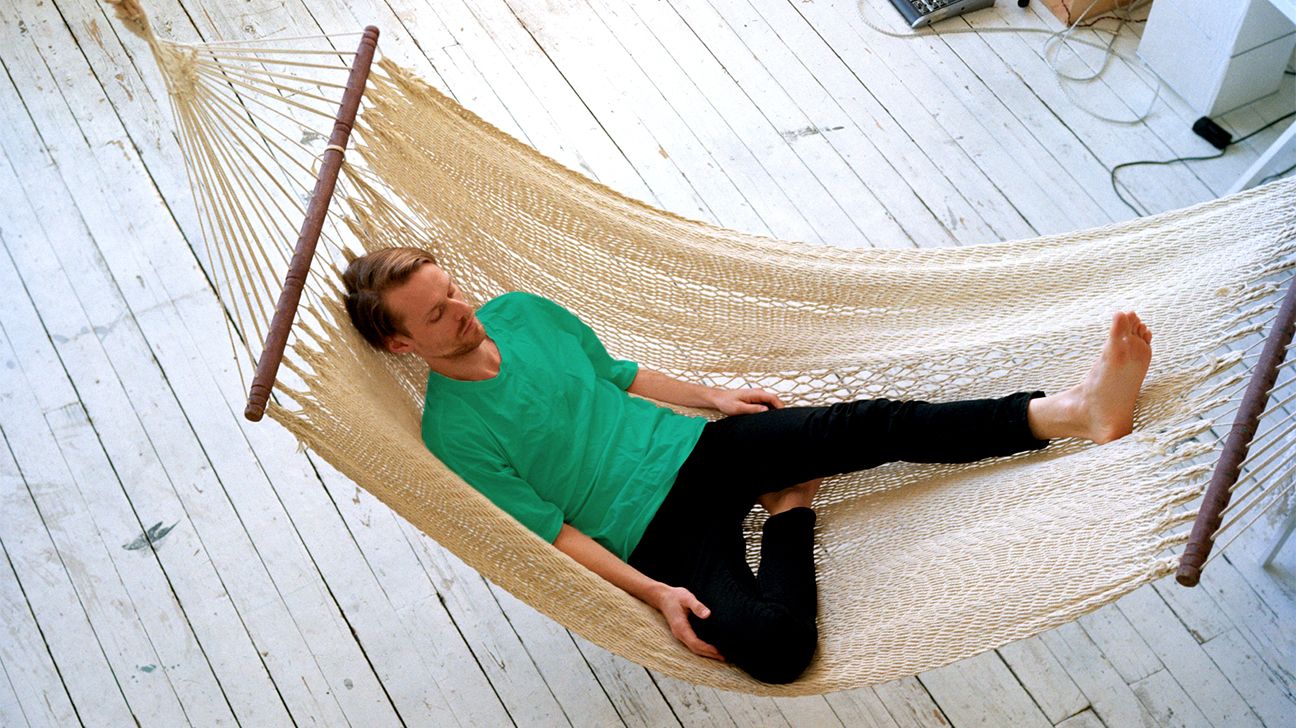We include products we think are useful for our readers. If you buy through links on this page, we may earn a small commission. Here’s our process.
Greatist only shows you brands and products that we stand behind.
Our team thoroughly researches and evaluates the recommendations we make on our site. To establish that the product manufacturers addressed safety and efficacy standards, we:- Evaluate ingredients and composition: Do they have the potential to cause harm?
- Fact-check all health claims: Do they align with the current body of scientific evidence?
- Assess the brand: Does it operate with integrity and adhere to industry best practices?
“Don’t go there. Live there,” went a memorable 2016 Airbnb campaign. The copywriters clearly never visited the room my partner and I rented in Brooklyn that year, because if they did, they’d never want to live there, not for a second.
Seductively described as a bohemian corner of urban paradise, the “room” had nothing but a futon and a desk covered in dust so thick, it took three Clorox wipes to remove. Only one feature was exactly as advertised — an exit to the building’s roof. And, in the corner of it, hung a shockingly white crochet hammock.
How could it not? The hammock was clearly out of place, a hippy trope of exotic getaways amidst brutal urbanism, but there it was, welcoming and comforting. It did the trick, offering what the best hammocks are destined to provide: vacation mode.
But what if a hammock could be a thing of the everyday?
A couple of years later, when my partner and I moved to a new house, my mother-in-law flew across the country to gift us, of all things, a beautiful sitting hammock. I finally had a chance to find out.
Once upon a time in Hollywood, the hammock was a facilitator of cinematic romance and lust. Contouring the bodies of golden era bombshells, hammocks delivered a sexy sway, promising and menacing at the same time. Bridget Bardot in “Please, Not Now!” (1961), Elizabeth Taylor in “Reflection in a Golden Eye” (1967), and Susan Sarandon in “Tempest” (1982) all lounged in hammocks; they were usually alone, plotting to seduce a love interest as shaky as the hammock itself.
Off screen, though, the hammock has only ever been the stuff of getaways, retreats, Thai islands, and Mediterranean villas.
I recall a hammock stretching across the terrace of a Ko Chang resort I stayed at several years ago, hosting the occasional drunk and sunburnt tourist. Once, a hammock was hanging on the porch of a shabby New Orleans hostel, the star of pre-smartphone photo sessions.
We hung our new friend on the front porch, but at first, a hammock as a household object didn’t sit right with me. So strong was the association with foreign adventure, that having a hammock at my disposal felt akin to raising an exotic animal as a pet. For weeks the frivolous object remained empty, collecting leaves and looking sad, as if our house was a poorly-rated youth hostel.
Then, one weekend, motivated by boredom, I found myself plunging into it, clutching newspapers and a soda can under my chin. The ridiculousness of it all, plus the urgent need to pee once perfectly situated, was somewhat refreshing. Love it or hate it, this wasn’t a mundane afternoon at home anymore.
Slowly, I’ve grown to appreciate the domestic hammock.
Studies have shown that a gentle rocking motion, even for adults, promotes deeper sleep and improves memory.
Hammocks are often used as a therapeutic tool for adults with learning disabilities and children with sensory disabilities. But even in the day-to-day routine, fully awake and merely dealing with burnout or stress, a hammock in the house has proved to be quite the gift.
According to some theories,our bodies have a tremendous capacity for “body memory,” able to bring information back to life through bodily experiences. What’s been accumulated through years of traveling can’t be unlearned; while the hammock-supported body remained right at home, the brain, nudged by the weightless rocking and the defiance of gravity, embarked on a mini-vacation to the carefree, wild, and amazing times I once had.
Another surprising benefit of having a hammock around? How easy and guilt-free doing nothing became.
Having given up on meditating on the sofa and peacefully napping due to lack of patience, I found being trapped in a hammock, limbs relaxed and balance slightly challenged, the perfect cure for fidgeting, restlessness, and distraction. No, I can’t get up right now to look at my phone. Not with the time spent getting comfortable in here!
A hammock, I’ve come to learn, is a blissful state of mind, one that I no longer need to hop on a plane to achieve.
Want to add a hammock to your home? Here are some pointers.
- Nationwide furniture sellers usually have pretty impressive hammock sections; try Allmodern, Wayfair, and Overstock for a wide range of options.
- Handmade and boho-style hammocks (like the crochet beauty on that grimy Brooklyn rooftop) can be found on Etsy, Anthropologie, and Nicamaka.
- There are lots of different types — cotton, canvas, rope, nylon, quilted, chairs, colorful Brazilian hammocks, and more! So browse around to figure out what’s best for your needs.
- Price point ranges widely. You can snag a budget hammock for less than $50 on DFOHome.com, Walmart.com, or Amazon.com, or splurge on a sturdy hammock-for-life model at places like Pawleys Island Hammocks.
Flora Tsapovsky is a San Francisco based writer who covers culture, food, and style. Her work has appeared in Bon Appetit, the San Francisco Chronicle, Afar Magazine, and more. Read more of her writing here and follow her on Instagram here.

